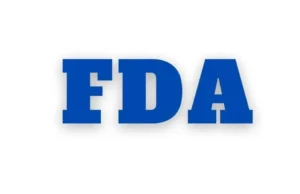Last Updated on January 20, 2024 by The Health Master
Indian Pharma
The Indian pharma industry is poised for exponential growth, set to expand tenfold in the next 25 years.
Dr. Viranchi Shah, national president of the Indian Drug Manufacturers’ Association (IDMA), highlighted the key sectors driving this surge during the recent Vibrant Gujarat Global Holistic Healthcare Summit.
Vision
In his insightful address, Dr. Shah emphasized the growth potential in biologics, large molecules, New Drug Delivery Systems (NDDS), and Complex Generics under the Production-Linked Incentive (PLI) schemes.
The Promotion of Research and Innovation in Pharma MedTech Sector (PRIP) scheme adds another layer, focusing on Orphan Drugs and Drug-Device combinations.
Seizing Opportunities
An exciting opportunity arises in the development and commercialization of off-patented products.
This strategic move aims to boost the production of Key Starting Materials (KSMs), active pharmaceutical ingredients (APIs), and formulations, leading to import substitution due to the flagship PLI-1 and PLI-2 schemes.
Unpacking the PLI Schemes
The government’s proactive measures include the PLI 1.0 scheme, initiated in 2020, focusing on bulk drug security.
Following its success, a Rs. 15,000 crore PLI 2.0 scheme was announced in 2021, targeting the manufacture of high-value products in the pharmaceutical sector.
Charting the Implementation Journey
The PLI scheme unfolds over eight years, starting from 2020-21.
Beyond benefiting domestic manufacturers, it aims to make a wider range of affordable medicines accessible to the Indian population.
Objectives Driving the PLI Scheme
The PLI scheme aims to spur innovation, especially in the development of complex and high-tech products, including emerging therapies and in-vitro diagnostic devices.
Simultaneously, it strives to foster self-reliance in crucial drugs, enhancing accessibility and affordability, including orphan drugs.
Three Categories, One Goal
Companies engaged in pharmaceuticals will operate within three categories.
The first focuses on biopharmaceuticals, complex generic drugs, patented drugs, cell-based or gene therapy drugs, phyto-pharmaceuticals, and orphan drugs.
The second centers on active pharmaceutical ingredients, key starting materials, and drug intermediaries.
The third encompasses drugs not covered in the first two categories, ranging from repurposed drugs to autoimmune drugs and in vitro diagnostic devices.
PRIP Scheme: A Game-Changer
The Department of Pharmaceutical introduced the PRIP scheme, allocating a budget of Rs. 5,000 crore to transform the sector from cost-based to innovation-based growth.
This initiative targets strengthening the research infrastructure, promoting industry-academia linkage for R&D, and cultivating a culture of quality research.
Diverse Categories under PRIP
The PRIP scheme operates within three categories, aligning with the diverse needs of the pharmaceutical sector.
Each category emphasizes specific pharmaceutical goods, fostering innovation and research in priority areas.
Budgetary Allocations and Notification
With a substantial budget of Rs. 5,000 crore, the PRIP scheme was officially notified on August 17, 2023.
This move underscores the commitment to enhancing research infrastructure and nurturing a pool of skilled scientists.
Transforming the Pharmaceuticals Landscape
The overarching aim of these schemes is to transform the Indian pharma sector, moving away from a cost-centric model to one driven by innovation.
This shift not only ensures sustained global competitiveness but also contributes significantly to quality employment generation in the country.
Global Competitive Advantage
By incentivizing innovation and research, these schemes position Indian pharma companies for a sustainable global competitive advantage.
Simultaneously, the emphasis on quality employment generation signifies a holistic approach to growth.
Disclaimer: This article contains information derived from the source mentioned below. Our team utilized an AI language model to rewrite and present the news or article in a unique format.
Expert Committee Recommends Rationalization of FDCs in India’s Pharma
Indian Pharmacopoeia Commission releases Addendum 2024 to IP 2022
PMBI: Pharmaceuticals and Medical Devices Bureau: Empowering Pharmacists
GeM Portal Opens Direct Sales Channel for 300+ Medical Device Manufacturers
Pharmexcil Emphasizes Use of USP’s DEG Toolkit in Pharma Industry
USFDA Approval granted for Ofloxacin Otic Solution
India’s demand for faster USFDA inspections: A Deep Dive
Challenges Faced by MSME Pharma Industries on Revised Schedule M
Pharma Revolution: UP’s Grand Plan for Lalitpur’s Pharma Park
NPPA is set to fix the ceiling prices for more than 200 formulations
For informative videos by The Health Master, click on the below YouTube icon:
For informative videos on Medical Store / Pharmacy, click on the below YouTube icon:
For informative videos on the news regarding Pharma / Medical Devices / Cosmetics / Homoeopathy etc., click on the below YouTube icon:
For informative videos on consumer awareness, click on the below YouTube icon:












